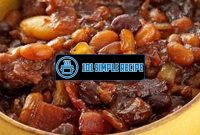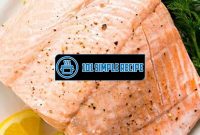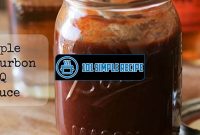Are you craving a delicious and moist banana nut bread? Look no further because we have the best recipe for you! This mouthwatering banana nut bread is made with buttermilk, giving it an extra tangy and rich flavor. Whether you are serving it for breakfast, snack time, or dessert, this recipe is sure to satisfy your cravings. The combination of ripe bananas and crunchy nuts creates a delightful texture that will leave you wanting more. Plus, the aroma of freshly baked bread will fill your kitchen, making it hard to resist. So, grab your apron and let’s get baking!

Unlocking the Secret to Perfect Banana Nut Bread
When it comes to homemade baked goods, few things are as satisfying as a warm slice of delicious banana nut bread. This classic treat is perfect for breakfast, snack time, or even dessert. If you have been searching for the best banana nut bread recipe with buttermilk, you have come to the right place.
The key to creating the most moist and flavorful banana nut bread lies in a few simple yet crucial elements. By mastering these techniques, you can elevate your baking game to new levels and wow your family and friends with your culinary skills. So, let’s dive into the secrets of making the perfect banana nut bread.
The Magic of Buttermilk
One secret to achieving a moist and tender texture in your banana nut bread is the use of buttermilk. The acidity in buttermilk helps to break down the gluten in the flour, resulting in a softer and more tender crumb. Additionally, buttermilk adds a subtle tangy flavor to the bread, which complements the sweetness of the bananas perfectly.
To incorporate buttermilk into your banana nut bread recipe, simply replace some of the liquid ingredients, such as milk or water, with an equal amount of buttermilk. This will add an extra layer of richness and flavor to your bread. You’ll be amazed at the difference it makes!
Choosing the Right Bananas
When it comes to banana nut bread, the riper the bananas, the better. Overripe bananas are not only sweeter but also have a softer texture, making them easier to mash and incorporate into the batter. Look for bananas that are speckled with brown spots or even almost entirely brown. These are the perfect bananas for baking.
By using ripe bananas, you’ll ensure that your bread is bursting with natural sweetness and flavor. The bananas will also add moisture to the batter, resulting in a perfectly moist loaf of bread. Don’t be tempted to use underripe bananas, as they will not have the same depth of flavor or texture.
Adding an Extra Crunch with Nuts
While banana bread is delicious on its own, adding nuts takes it to a whole new level. The addition of chopped nuts, such as walnuts or pecans, adds a delightful crunch and texture to the bread. Not only do they provide a contrasting element to the softness of the bread, but they also add a rich and nutty flavor that pairs beautifully with the bananas.
To incorporate nuts into your banana nut bread, simply fold them into the batter at the end of the mixing process. Be sure to chop the nuts into small pieces so that they are evenly distributed throughout the bread. You can also sprinkle some extra nuts on top before baking to add an aesthetic touch.
In conclusion, perfecting the art of banana nut bread requires a few simple but essential techniques. By adding buttermilk for moisture, choosing ripe bananas for flavor, and incorporating nuts for extra crunch, you’ll be well on your way to creating the best banana nut bread recipe with buttermilk. So, don your apron, preheat your oven, and get ready to indulge in a slice of homemade perfection. Happy baking!
Mixing and Preparing the Batter
Master the art of combining the ingredients to achieve a light and fluffy batter for your banana nut bread.
The Perfect Ratio
Creating the perfect banana nut bread begins with ensuring the proper ratio of ingredients. For a moist and flavorful bread, you’ll need:
- 2 cups ripe bananas, mashed
- 1/2 cup buttermilk
- 1/2 cup unsalted butter, melted
- 1 cup granulated sugar
- 2 large eggs
- 2 cups all-purpose flour
- 1 teaspoon baking soda
- 1/2 teaspoon salt
- 1 cup chopped nuts (walnuts or pecans work well)
These quantities ensure a balanced flavor and texture, providing the perfect combination of sweetness from the bananas and sugar, richness from the butter, and crunchiness from the nuts.
Incorporating the Wet and Dry Ingredients
Once you have gathered all the necessary ingredients and measured them accurately, it’s time to combine the wet and dry components. This step is crucial in achieving a uniform batter.
- Mixing the wet ingredients: In a large bowl, combine the mashed bananas, buttermilk, melted butter, and granulated sugar. Use a whisk or a spatula to blend them together until well incorporated. The mashed bananas should be smooth and evenly distributed.
- Preparing the dry ingredients: In a separate bowl, mix together the all-purpose flour, baking soda, and salt. Sift them together using a fine-mesh sieve. This helps to remove any lumps and ensures an even distribution of the leavening agents.
- Combining the wet and dry ingredients: Gradually add the dry ingredients to the wet mixture, stirring gently after each addition. Use a spatula or wooden spoon to fold the batter until just combined. Be careful not to overmix, as this can result in a dense and tough bread.
Note: It’s important to remember that overmixing can lead to a tough texture in your bread. The goal is to achieve a light and fluffy batter, so mix until the ingredients are just incorporated.
The Mixing Technique
The final step in preparing the batter is mastering the mixing technique. Follow these tips for the best results:
- Gentle folding: When combining the wet and dry ingredients, use a gentle folding motion rather than vigorous stirring. This helps prevent the formation of excess gluten, resulting in a tender crumb.
- Mixing the nuts: Once the batter is well mixed, add in the chopped nuts. Stir gently until they are evenly distributed throughout the batter.
By incorporating the nuts at this stage, you ensure that they are evenly dispersed and will add a delightful crunch to every bite of your banana nut bread.
Now that you have mastered the art of mixing and preparing the batter, you are well on your way to creating the best banana nut bread with buttermilk. Remember to follow the perfect ratio, combine the wet and dry ingredients with care, and utilize a gentle mixing technique for a light and fluffy result. Happy baking!
Baking to Perfection
When it comes to baking a delicious banana nut bread, achieving the perfect texture and flavor can be a challenge. However, with the right techniques and attention to detail, you can create a beautifully golden and evenly baked loaf that will have everyone coming back for more. Here are the secrets to baking banana nut bread to perfection:
The Right Pan and Oven Temperature
The choice of pan and the correct oven temperature are crucial factors in baking the best banana nut bread. Using a 9×5-inch loaf pan is ideal as it allows the bread to rise evenly and produces a desirable texture. Coat the pan with butter or cooking spray to prevent sticking. Preheat your oven to 350°F (175°C) before mixing your ingredients to ensure even cooking.
Pro Tip: Preheating your oven is essential to achieve consistent baking results. It helps the bread rise properly and ensures even heat distribution throughout the baking process.
Monitoring and Testing for Doneness
Keeping a close eye on your banana nut bread while it bakes is crucial to avoid undercooking or overcooking. Bake the loaf for about 50-60 minutes or until a toothpick inserted into the center comes out clean or with a few moist crumbs. Remember that different ovens may vary in temperature, so it’s essential to know your oven’s quirks and adjust the baking time accordingly.
Pro Tip: To prevent overbrowning, you can loosely cover the bread with aluminum foil after it has reached the desired color.
Troubleshooting Common Baking Problems
Even the most experienced bakers encounter challenges in the kitchen. Here are a few common baking problems you may encounter while making banana nut bread and how to troubleshoot them:
- Dense or Sunken Bread: If your bread turns out dense or sunken in the middle, it may be due to using too much flour or overmixing the batter. Measure your flour accurately using a kitchen scale or spooning it into the measuring cup, and gently fold the ingredients together until just combined.
- Dry or Crumbly Texture: A dry or crumbly texture can result from overbaking or using too much flour. Reduce the baking time by a few minutes and be sure to measure your flour correctly.
- Gummy or Uncooked Center: If your bread appears fully baked on the outside but has a gummy or uncooked center, it may be because the oven temperature is too low or the bread is underbaked. Invest in an oven thermometer to ensure accurate temperature control and bake for a few more minutes, if needed.
- Unevenly Baked: Uneven baking can occur if the oven temperature is uneven or if the pan is not placed in the center of the oven. Double-check your oven temperature with a thermometer and make sure the pan is positioned in the middle of the oven for consistent results.
Note: Understanding these common baking problems and their solutions will help you troubleshoot and improve your banana nut bread recipe over time.
Pro Tip: To enhance the flavor and moistness of your banana nut bread, you can add a tablespoon of buttermilk to the batter. The tangy flavor of the buttermilk complements the sweetness of the bananas and adds a delightful twist.
By paying attention to the details and using these expert tips, you can bake the best banana nut bread with buttermilk. Remember to choose the right pan, monitor the oven temperature, test for doneness, and troubleshoot any baking issues that may arise. With practice, you’ll be able to achieve a consistently delicious loaf every time.
Enhancing the Flavor Profile
Elevate the taste of your banana nut bread with a few additional ingredients and flavor-enhancing techniques. By adding spices and extracts, boosting the nutty flavor, and experimenting with sweet variations and toppings, you can take your banana nut bread to a whole new level of deliciousness.
Spices and Extracts
Spices and extracts are key ingredients when it comes to enhancing the flavor profile of banana nut bread. Adding a combination of cinnamon, nutmeg, and vanilla extract can bring warmth and complexity to the taste. These aromatic spices provide a comforting and nostalgic feel that pairs perfectly with the sweetness of the bananas and the nuttiness of the bread.
✨ Pro tip: Start with a teaspoon of cinnamon and a pinch of nutmeg, and gradually adjust the amount to suit your personal preference. The goal is to enhance the flavors without overpowering them.
Boosting the Nutty Flavor
To truly bring out the nuttiness in your banana nut bread, consider adding additional nuts to the recipe. Walnuts and pecans are popular choices that complement the flavors of the bread and provide a satisfying crunch. Chop the nuts into small pieces and fold them into the batter before baking.
Insider tip: Toasting the nuts before adding them to the batter can intensify their flavor. Simply spread the nuts on a baking sheet and toast them in the oven at 350°F (175°C) for about 8-10 minutes, or until they become golden and fragrant. Let them cool before adding them to the batter.
If you want an even stronger nutty taste, consider using nut extracts. Almond extract, for example, can add an extra layer of nuttiness to your banana nut bread. Only a small amount is needed, as these extracts are highly concentrated.
Sweet Variations and Toppings
For those with a sweet tooth, there are endless variations and toppings to explore. You can add a handful of chocolate chips to the batter for a delightful chocolatey twist. The melted chocolate will create pockets of gooey goodness throughout the bread.
Fun fact: Dark chocolate can provide a slightly bitter contrast to the sweetness of the bread, while milk chocolate offers a smoother and creamier flavor.
If you prefer a fruity touch, consider incorporating dried fruits such as raisins or cranberries. These chewy and slightly tangy additions can bring a burst of flavor to each bite.
Another way to elevate your banana nut bread is by adding a streusel topping. Mix together brown sugar, flour, and butter to create a crumbly mixture. Sprinkle it generously over the batter before baking. The resulting golden and crunchy topping adds both texture and sweetness to the bread.
Insider tip: To take it up a notch, experiment with different types of sugars, such as muscovado or coconut sugar, for a unique flavor profile.
With these flavor-enhancing techniques and additional ingredients, you can create a banana nut bread recipe that is truly the best of the best. Get creative, follow your taste buds, and enjoy the delicious results!
Storing and Serving Your Banana Nut Bread
Discover the best practices for preserving the freshness of your banana nut bread and serving it to perfection.
Proper Storage Techniques
When it comes to storing your delicious banana nut bread, there are a few important techniques to keep in mind to ensure its freshness and flavor are preserved.
First and foremost, you should wrap your banana nut bread tightly in plastic wrap or aluminum foil. This will help to prevent air from getting in and causing it to become stale. Additionally, it will protect the bread from absorbing any odors or flavors from other foods in your refrigerator.
Next, consider storing your banana nut bread in an airtight container. This will provide an extra layer of protection and help to maintain its moisture. If you don’t have an airtight container, a resealable plastic bag can also do the trick.
It’s important to keep in mind that banana nut bread should be stored at room temperature for up to two days. However, after this time, it’s best to refrigerate it to keep it fresh for a longer period. When refrigerating, make sure to wrap it tightly as mentioned before.
Slicing and Toasting Tips
Now that you know how to store your banana nut bread, let’s discuss some tips for slicing and toasting it perfectly.
When it comes to slicing your banana nut bread, it’s best to use a serrated knife. This type of knife will help you achieve clean and even slices without squishing or damaging the bread. Take care to slice it just before serving to maintain its freshness.
Now, let’s move on to toasting. Toasting your banana nut bread can elevate its flavor and provide a warm and crunchy texture. To toast it, simply place the slices in a toaster or toaster oven until they are golden brown and slightly crispy. You can also add a pat of butter or a drizzle of honey for an extra indulgent touch.
Presentation and Serving Suggestions
Finally, let’s talk about ways to present and serve your delicious banana nut bread.
To make your banana nut bread visually appealing, consider dusting it with powdered sugar or garnishing it with a sprinkle of chopped nuts. This will add an elegant touch and make it even more enticing.
When serving, you can choose to enjoy your banana nut bread as is, or you can get creative and turn it into a decadent dessert. Serve it with a scoop of vanilla ice cream or a dollop of whipped cream for a delightful treat. You can also serve it alongside a cup of hot coffee or tea for a cozy snack or breakfast.
Remember, the key to serving your banana nut bread is to be creative and have fun with it. Don’t be afraid to experiment and try new combinations that suit your taste buds.
By following these proper storage techniques, slicing and toasting tips, and presentation and serving suggestions, you will be able to enjoy the best banana nut bread with buttermilk that is fresh, flavorful, and perfect for any occasion.
Thank you for reading this article on the best banana nut bread recipe with buttermilk. We hope you found it informative and inspiring to try out in your own kitchen. If you’re a fan of the classic combination of bananas and nuts, this recipe is definitely a must-try. The use of buttermilk adds a delightful tang and moisture to the bread, making every bite incredibly satisfying. So, next time you’re looking to bake something delicious, don’t forget to revisit this recipe. Happy baking!
Frequently Asked Questions
Here are some frequently asked questions about the best banana nut bread recipe with buttermilk:
| No. | Questions | Answers |
|---|---|---|
| 1 | Can I use other types of nuts instead of walnuts? | Absolutely! While walnuts are commonly used in banana nut bread, you can substitute them with your favorite nuts such as pecans or almonds. The choice is yours! |
| 2 | Can I use regular milk instead of buttermilk? | Yes, you can use regular milk as a substitute for buttermilk. Simply add a teaspoon of vinegar or lemon juice to the milk and let it sit for a few minutes before using it in the recipe. |
| 3 | Can I freeze the banana nut bread? | Absolutely! Banana nut bread freezes well. Once it has completely cooled, wrap it tightly in plastic wrap or aluminum foil and place it in a freezer-safe bag. When you’re ready to enjoy it, simply thaw it at room temperature or warm it up in the oven. |
| 4 | Can I add chocolate chips to the banana nut bread? | Definitely! Adding chocolate chips to the banana nut bread is a delicious variation. Simply fold in a cup of chocolate chips into the batter before baking. It will add a delightful chocolatey twist to the classic recipe. |
| 5 | How long does the banana nut bread stay fresh? | When stored properly in an airtight container at room temperature, the banana nut bread can stay fresh for up to 4-5 days. You can also refrigerate it to extend its shelf life. |
| 6 | Can I make this recipe gluten-free? | Absolutely! You can use gluten-free flour blend as a substitute for regular all-purpose flour to make this recipe gluten-free. Just make sure to check the ratio of flour to liquid in the blend and adjust accordingly. |
Try the Best Banana Nut Bread Recipe with Buttermilk Today!
Don’t miss out on the opportunity to indulge in the best banana nut bread recipe with buttermilk. The combination of ripe bananas, crunchy nuts, and tangy buttermilk creates a treat that will satisfy any craving. Whether you enjoy it for breakfast, as a snack, or for dessert, this recipe is sure to impress. So, gather your ingredients, preheat your oven, and get ready to enjoy a slice of heaven. Remember to bookmark this recipe for future reference and visit our website again for more delicious creations. Happy baking!
Jump to Recipe
Best Banana Nut Bread Recipe with Buttermilk

Learn how to make the best banana nut bread with buttermilk. This recipe combines ripe bananas, crunchy nuts, and tangy buttermilk for a delightful treat.
- 2 cups all-purpose flour
- 1 teaspoon baking soda
- 1/2 teaspoon salt
- 1/2 cup unsalted butter (softened)
- 1 cup granulated sugar
- 2 large eggs
- 3 ripe bananas (mashed)
- 1/2 cup buttermilk
- 1 teaspoon vanilla extract
- 1 cup chopped walnuts
- Preheat the oven to 350°F (175°C). Grease a 9×5-inch loaf pan and set aside.
- In a medium bowl, whisk together the flour, baking soda, and salt. Set aside.
- In a large mixing bowl, cream together the butter and sugar until light and fluffy, about 3-4 minutes.
- Add the eggs, one at a time, mixing well after each addition. Stir in the mashed bananas.
- Gradually add the dry ingredients to the wet ingredients, alternating with buttermilk. Begin and end with the dry ingredients.
- Fold in the chopped walnuts until evenly distributed.
- Pour the batter into the prepared loaf pan. Bake for 55-60 minutes, or until a toothpick inserted into the center comes out clean.
- Remove the bread from the oven and let it cool in the pan for 10 minutes. Then, transfer it to a wire rack to cool completely before slicing and serving.






